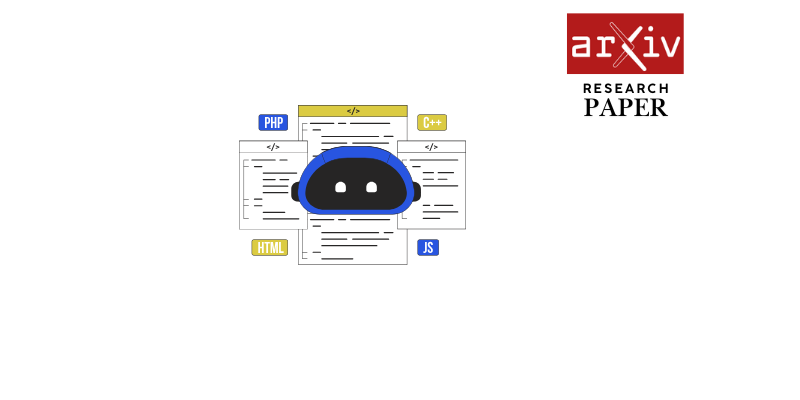Authors: Gokul Radhakrishnan, Rahul Sundar, Nishant Parashar, Antoine Blanchard, Daiwei Wang, Boyko Dodov
Paper Content:
Page 1:
Continuous latent representations for modeling
precipitation with deep learning
Gokul Radhakrishnan
Verisk Analytics
Hyderabad, IND 500081
gokul.r@verisk.comRahul Sundar
Verisk Analytics
Hyderabad, IND 500081
rahulsundar@verisk.comNishant Parashar
Verisk Analytics
Hyderabad, IND 500081
nparashar@verisk.com
Antoine Blanchard
Verisk Analytics
Boston, MA 02115
ablanchard@verisk.comDaiwei Wang
Verisk Analytics
Boston, MA 02115
dwang@verisk.comBoyko Dodov
Verisk Analytics
Boston, MA 02115
bdodov@verisk.com
Abstract
The sparse and spatio-temporally discontinuous nature of precipitation data presents
significant challenges for simulation and statistical processing for bias correction
and downscaling. These include incorrect representation of intermittency and
extreme values (critical for hydrology applications), Gibbs phenomenon upon
regridding, and lack of fine scales details. To address these challenges, a common
approach is to transform the precipitation variable nonlinearly into one that is more
malleable. In this work, we explore how deep learning can be used to generate a
smooth, spatio-temporally continuous variable as a proxy for simulation of precip-
itation data. We develop a normally distributed field called pseudo-precipitation
(PP) as an alternative for simulating precipitation. The practical applicability of
this variable is investigated by applying it for downscaling precipitation from 1◦
(∼100 km) to 0.25◦(∼25 km).
1 Introduction
Precipitation is a key driver of the Earth’s hydrological cycle, making its accurate modeling crucial
for studying atmospheric processes. Accurate estimation of precipitation is vital for various human
activities, such as transportation and agriculture. Unlike smoother meteorological variables such
as temperature, water vapor, and wind speed, precipitation data is sparse and exhibits significant
spatial variability. Despite major advancements in numerical weather prediction (NWP) and global
circulation models (GCMs), these models still face challenges in accurately predicting extreme
precipitation events, like heavy rainfall, due to limitations in resolution and parameterization. These
models are further constrained by high computational demands of simulating global climate.
Precipitation data presents several inherent complexities that make its post processing particularly
challenging. Precipitation has high spatio-temporal variability, resulting in vast regions with zero
values interspersed with sporadic positive values that can increase exponentially in magnitude [ 21].
The low frequency of extreme precipitation events adds to the complexity [ 18,17]. Moreover, both
precipitation and the various multi-scale factors contributing to its formation display non-normal and
nonlinear behaviors.
These challenges are particularly evident in downstream applications such as statistical post-
processing [ 25], downscaling [ 11,8,16], nowcasting [ 18], and forecasting [ 10,15]. Various research
groups have utilized statistical methods to address the complexities of precipitation data, especially
Tackling Climate Change with Machine Learning: workshop at NeurIPS 2024.arXiv:2412.14620v1 [cs.LG] 19 Dec 2024
Page 2:
in bias correction [ 23,9,22]. The statistical post-processing of simulated precipitation from NWP
models lack proper consideration of a number of moisture-related properties of non-precipitating
members of the ensemble that likely have discriminating information on the calibration forecasts.
This issue is more pronounced when the ensemble forecast is dry-biased, making the statistical
adjustment process more complicated. To address this issue, Yuan et al. [24] proposed a statistically
continuous variable called pseudo-precipitation obtained after blending precipitation and integrated
vapour deficit (IVD) together.
To achieve a consistent representation for precipitation while preserving its key characteristics, we
propose using machine learning for generating a pseudo-precipitation field. For transforming total
precipitation (TP) into a spatiotemporally continuous field, we use vertically integrated moisture
divergence (VIMD) [ 2]. VIMD contains relevant information pertaining to decrease (divergence) or
increase (convergence) of moisture within a vertical column of air. Unlike IVD, VIMD can take both
negative and postive values and its spatial correlation structure is similar to TP. This can potentially
enable more effective blending, specifically at point of discontinuity through deep learning techniques,
as detailed in Section 2. Further, we perform the blending of our pseudo-precipitation field targeted
towards a symmetric Gaussian distribution. The smoother Gaussian blending makes precipitation
data more manageable for analysis, enhancing the coherence and accuracy of post-processing models.
Additionally, it offers improved physical consistency by representing the processes driving precipita-
tion patterns and facilitate the integration of precipitation with other climate variables. To assess the
practical applicability of pseudo-precipitation, we evaluate its efficacy for the downscaling task using
generative deep learning [14, 6].
2 Methods
Pseudo-precipitation (PP) We define PP as a smooth, Gaussian field generated by blending TP
and VIMD, inspired by the work of Yuan et al. In [24], IVD was used to generate the PP field. IVD
represents the difference between actual and saturation specific humidity, integrated throughout the
troposphere. IVD measures dryness of the atmospheric column and hence is always negative. The
authors defined PP as being equal to precipitation when precipitation is positive while the non-positive
values are replaced by IVD after suitable transformation to ensure continuity of the blended field.
In this work, we use VIMD as a replacement for IVD. VIMD is defined as the vertical integral of the
moisture flux for a column of air extending from the surface of the Earth to the top of the atmosphere.
Its horizontal divergence is the rate of moisture spreading outward from a point, per square metre.
Positive values indicate moisture divergence (dry conditions) and negative values indicate moisture
convergence (potential condensation). VIMD’s spatial correlation structure closely resembles that of
TP, making it a suitable candidate for blending with TP. To ensure seamless integration of VIMD and
TP, we blend them into a Gaussian distribution as symmetric distributions are preferred for statistical
processing. Additionally VIMD is a native ERA5 variable along with TP facilitating ease in analysis.1
Figure 1: Schematic of the mapping model for PP
1https://codes.ecmwf.int/grib/param-db/213
2
Page 3:
1
Figure 2: Low and high resolution pairs of TP (left) and PP (right).
Our approach utilizes a fully connected encoder-decoder framework (figure 1), trained on point-wise
global ERA5 reanalysis data [ 5]. The encoder blends TP and VIMD into a Gaussian-distributed
field, pseudo-precipitation (PP). A quantile loss is used to align the distribution of PP with that of a
standard normal distribution. The decoder then reconstructs TP from PP. Compared to Yuan et al.
[24], this neural network framework offers a more flexible and expressive way to parameterize the
blended field, while also enabling the decoding of precipitation from the blended field.
Limitations of TP for downscaling The overarching limitations of TP are outlined in Section
1. For training a supervised model for downscaling, we generate samples at coarse resolution. A
common method for this is spectral truncation (based on spherical harmonics or spherical wavelets)
[1,13] as it is a robust framework for scale separation. Applying spectral truncation on TP leads to
non-physical artifacts, particularly oscillations or "ringing" near sharp edges or discontinuities [ 7]
due to Gibbs phenomena, as illustrated in figure 2a for spherical wavelet transforms. In contrast, the
proposed pseudo-precipitation field does not suffer from this issue (figure 2b).
Overview of the downscaling framework To demonstrate the benefits of PP, we evaluate its
efficacy in the context of downscaling. First, we generate paired low-resolution and high-resolution
PP data from ERA5 reanalysis. The high-resolution data is at ERA5’s native 0.25◦(∼25km)
resolution. The low-resolution data is generated by spherical wavelet transforms of the high-resolution
data, producing band-limited fields at a resolution of 1.4◦(∼70km), as shown in figure 2. Our
downscaling framework is described in Sundar et al. [19]; which integrates a spatio-temporal model,
SimVP [ 4,20], with a diffusion model [ 3,6,12]. Once the downscaling model is trained on PP, we
decode TP at the target resolution using the decoder in figure 1. Downscaled, decoded TP is used for
investigating the overall performance of our model.
Figure 3: Visual assessment of downscaling for a snapshot. Downscaled PP is decoded to TP using
the PP model decoder from figure 1.
3 Results
Experimental protocol The TP and VIMD variables in this study are accumulated over three-hour
intervals. The downscaling model is trained on 30 years of ERA5 reanalysis data (1990-2020), with
an additional 10 years used for testing and validation. The PP model is trained on one year of ERA5
data (2010). All experiments were conducted on T4 GPUs hosted on AWS.
3
Page 4:
Validation We evaluate the performance of our downscaling model over Europe by comparing the
results in terms of visual agreement, power spectra at fixed locations, and local estimates of extreme
precipitation. Figure 3 provides a qualitative assessment of the predictions from our downscaling
model, showing that the model successfully captures the fine-scale features (stochastic in nature),
while preserving the large-scale structures. Figure 4a presents the temporal power spectrum and
figure 4b displays quantile plots for major European cities. Additionally, figure 5 illustrates the local
estimates of the number of days of extreme precipitation (TP > 20 mm). Our results exhibit a strong
agreement with the ERA5 dataset.
Figure 4: a) Power spectral density (PSD) and b) Q-Q plots.
Figure 5: Number of days of extreme precipitation (TP > 20 mm).
4 Discussion
In this study we propose a machine learning-based approach for generating pseudo-precipitation which
is a spatio-temporally smooth and continuous field derived from TP and VIMD. We demonstrate the
advantages of using the pseudo-precipitation field as a robust alternative to precipitation, particularly
in downscaling applications. The proposed methodology accurately estimates extreme precipitation
and produces predictions that are consistent across the frequency spectrum when compared to ERA5.
While this work primarily focuses on downscaling, the proposed pseudo-precipitation blending
approach can also be applied to other statistical tasks, such as downscaling, debiasing and forecasting.
References
[1]J.-P. Antoine, L. Demanet, L. Jacques, and P. Vandergheynst. Wavelets on the sphere: Implementation and
approximations. Applied and Computational Harmonic Analysis , 13(3):177–200, 2002.
4
Page 5:
[2]P. C. Banacos and D. M. Schultz. The use of moisture flux convergence in forecasting convective initiation:
Historical and operational perspectives. Weather and Forecasting , 20(3):351–366, 2005.
[3]P. Dhariwal and A. Nichol. Diffusion models beat GANs on image synthesis. Advances in Neural
Information Processing Systems , 34:8780–8794, 2021.
[4]Z. Gao, C. Tan, L. Wu, and S. Z. Li. Simvp: Simpler yet better video prediction. In Proceedings of the
IEEE/CVF Conference on Computer Vision and Pattern Recognition , pages 3170–3180, 2022.
[5]H. Hersbach, B. Bell, P. Berrisford, S. Hirahara, A. Horányi, J. Muñoz-Sabater, J. Nicolas, C. Peubey,
R. Radu, D. Schepers, et al. The ERA5 global reanalysis. Quarterly Journal of the Royal Meteorological
Society , 146(730):1999–2049, 2020.
[6]T. Karras, M. Aittala, T. Aila, and S. Laine. Elucidating the design space of diffusion-based generative
models. Advances in Neural Information Processing Systems , 35:26565–26577, 2022.
[7]S. E. Kelly. Gibbs phenomenon for wavelets. Applied and Computational Harmonic Analysis , 3(1):72–81,
1996.
[8]B. Kumar, K. Atey, B. B. Singh, R. Chattopadhyay, N. Acharya, M. Singh, R. S. Nanjundiah, and S. A.
Rao. On the modern deep learning approaches for precipitation downscaling. Earth Science Informatics ,
16(2):1459–1472, 2023.
[9]X.-H. Le, G. Lee, K. Jung, H.-u. An, S. Lee, and Y . Jung. Application of convolutional neural network for
spatiotemporal bias correction of daily satellite-based precipitation. Remote Sensing , 12(17):2731, 2020.
[10] W. Li, X. Gao, Z. Hao, and R. Sun. Using deep learning for precipitation forecasting based on spatio-
temporal information: a case study. Climate Dynamics , 58(1):443–457, 2022.
[11] D. Maraun, F. Wetterhall, A. Ireson, R. Chandler, E. Kendon, M. Widmann, S. Brienen, H. Rust, T. Sauter,
M. Themeßl, et al. Precipitation downscaling under climate change: Recent developments to bridge the
gap between dynamical models and the end user. Reviews of Geophysics , 48(3), 2010.
[12] M. Mardani, N. Brenowitz, Y . Cohen, J. Pathak, C.-Y . Chen, C.-C. Liu, A. Vahdat, K. Kashinath, J. Kautz,
and M. Pritchard. Residual diffusion modeling for km-scale atmospheric downscaling. 2024.
[13] J. D. McEwen, C. Durastanti, and Y . Wiaux. Localisation of directional scale-discretised wavelets on the
sphere. Applied and Computational Harmonic Analysis , 44(1):59–88, 2018.
[14] N. Rampal, P. B. Gibson, S. Sherwood, G. Abramowitz, and S. Hobeichi. A robust generative adversarial
network approach for climate downscaling and weather generation. Authorea Preprints , 2024.
[15] W. M. Ridwan, M. Sapitang, A. Aziz, K. F. Kushiar, A. N. Ahmed, and A. El-Shafie. Rainfall forecasting
model using machine learning methods: Case study Terengganu, Malaysia. Ain Shams Engineering
Journal , 12(2):1651–1663, 2021.
[16] D. Sachindra, K. Ahmed, M. M. Rashid, S. Shahid, and B. Perera. Statistical downscaling of precipitation
using machine learning techniques. Atmospheric Research , 212:240–258, 2018.
[17] M. Scheuerer and T. M. Hamill. Statistical postprocessing of ensemble precipitation forecasts by fitting
censored, shifted gamma distributions. Monthly Weather Review , 143(11):4578–4596, 2015.
[18] X. Shi, Z. Gao, L. Lausen, H. Wang, D. Yeung, W. Wong, and W. Woo. Deep learning for precipitation
nowcasting: A benchmark and a new model. Advances in Neural Information Processing Systems , 30,
2017.
[19] R. Sundar, N. Parashar, A. Blanchard, and B. Dodov. TAUDiff: Improving statistical downscaling for
extreme weather events using generative diffusion models. In NeurIPS 2024 Workshop on Tackling Climate
Change with Machine Learning , 2024.
[20] C. Tan, Z. Gao, L. Wu, Y . Xu, J. Xia, S. Li, and S. Z. Li. Temporal attention unit: Towards efficient
spatiotemporal predictive learning. In Proceedings of the IEEE/CVF Conference on Computer Vision and
Pattern Recognition , pages 18770–18782, 2023.
[21] F. J. Tapiador, R. Roca, A. D. G, B. Dewitte, W. Petersen, and F. Zhang. Is precipitation a good metric for
model performance? Bulletin of the American Meteorological Society , 100(2):223–233, 2019.
[22] F. Wang and D. Tian. On deep learning-based bias correction and downscaling of multiple climate models
simulations. Climate Dynamics , 59(11):3451–3468, 2022.
5
Page 6:
[23] F. Wang, D. Tian, and M. Carroll. Customized deep learning for precipitation bias correction and
downscaling. Geoscientific Model Development , 16(2):535–556, 2023.
[24] H. Yuan, P. Schultz, E. I. Tollerud, D. Hou, Y . Zhu, M. Pena, M. Charles, and Z. Toth". "pseudo-
precipitation: A continuous precipitation variable". "2019".
[25] T. Zhang, Z. Liang, W. Li, J. Wang, Y . Hu, and B. Li. Statistical post-processing of precipitation forecasts
using circulation classifications and spatiotemporal deep neural networks. Hydrology and Earth System
Sciences Discussions , 2023:1–26, 2023.
A Appendix
A.0.1 Training strategy
The pseudo-precipitation (PP) model uses an encoder-decoder architecture based on fully connected
layers to process point-wise ERA5-resolution data, blending them into PP. A parametric study opti-
mized the encoder and decoder depth and neurons per layer. To approximate a Gaussian distribution
in PP, we apply a quantile loss that matches the quantiles of PP with those of a standard Gaussian. It
is defined as:
Lquant =MSE (q(ypred),q(ynormal )) (1)
where qis a vector that contains the quantiles of the variable y. Quantiles are computed using 4000
bins that span 10−6to1−10−6. A Mean Square Error (MSE) loss is also used to enforce the
reconstruction of decoded TP from PP.:
Ltotal =wquant Lquant +wrecLrec (2)
where wquant andwrecare scalar weights for quantile and reconstruction loss terms, respectively.
The combination of wquant = 20 andwrec= 1 achieved optimal PP blending and accurate TP
reconstruction, producing a mean absolute error (MAE) of approximately 10−6.
6
























